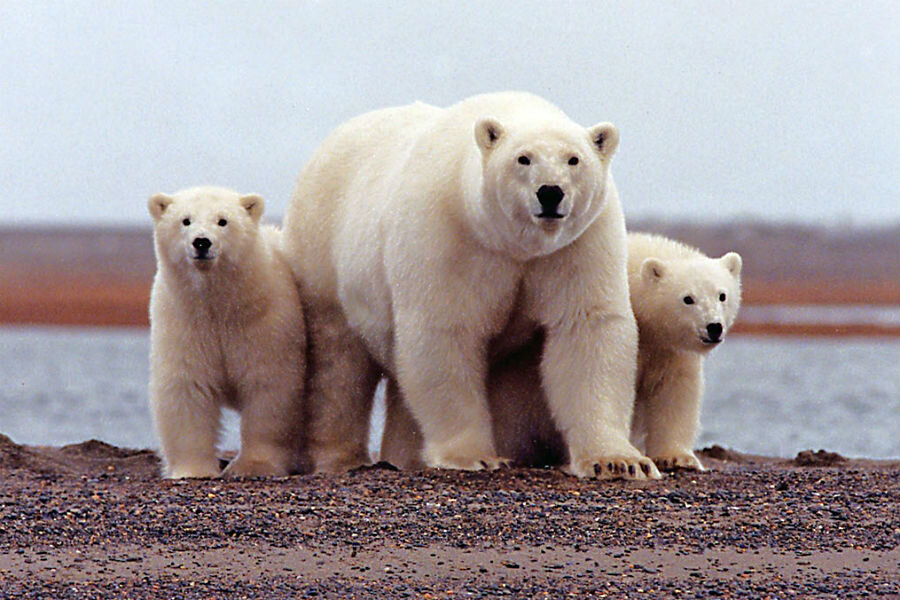What's the future of polar bears? Studies say they may soon be extinct
Loading...
Polar bears could soon be extinct due to global warming, says a recently released government report.
According to the report, which is part of the US Fish and Wildlife Service's recovery plan for the polar bear, approximately a third of all polar bears could face imminent danger from greenhouse gas emissions in as little as 10 years.
"Polar bears are in big trouble," Rebecca Noblin, Alaska director for the Center for Biological Diversity, told the Associated Press. "There are other steps we can take to slow the decline of polar bears, but in the long run, the only way to save polar bears in the Arctic is to reduce greenhouse gas emissions."
As Arctic waters heat up, sea ice – a primary hunting ground for polar bears – disappears, forcing the bears to retreat to land to find food. Researchers say food sources on land are limited and will not be able to sustain polar bear populations in summer months when the ice is gone.
The loss of sea ice and a decrease in available prey are the two main factors contributing to potential extinction. The study's lead author, Todd Atwood, describes other threats such as trans-Arctic shipping, oil and gas exploration, and disease and contaminants as having "only negligible effects on polar bear populations."
In order to look at how emissions will affect polar bears in the coming years, researchers used two models. In the first, emissions remained on their current course, resulting in unabated global warming. In the second, emissions were reduced and a stabilization of warming was achieved.
In the first scenario, hypothetical sea ice loss and other climate change-related problems led to the rapid decline of some polar bear populations as soon as 2025. In the second scenario, with reduced emissions, the effects of global warming started to kick in about 25 years later.
Both predicted a dire outcome for polar bears: Even if emissions are reduced, researchers predict all polar bear populations will decrease.
So what can be done to help our furry white friends?
The recovery plan identifies a "suite of high-priority actions to be taken in the near- and mid-term in the United States that will contribute to the survival of polar bears, so they are in a position to recover once Arctic warming has been abated," according to Jennifer Kohout, regional program manager and co-chair of the polar bear recovery team at the US Fish and Wildlife Service.
Goals include better management of subsistence harvests and deadly interactions with humans, better protection of the bears' dens from humans, and minimizing the risk to polar bears from oil spills.
Kohout says that stopping the warming of Arctic waters will require a commitment from countries all around the world. Mike Runge, a US Geological Survey research ecologist, notes that "addressing sea ice loss will require global policy solutions" and will "likely be years in the making."
Establishing these global policy solutions may be easier said than done, says climate change expert and University of Alaska Fairbanks professor Igor Polyakov.
"The major players now in the game cannot agree on what to do," Polyakov says. "China and the United States, they have their own industrial interests, their own political interest, and there is no consensus in the global community of what to do and how to do it."
Discussions will continue at a United Nations meeting on climate change in Paris in December.





